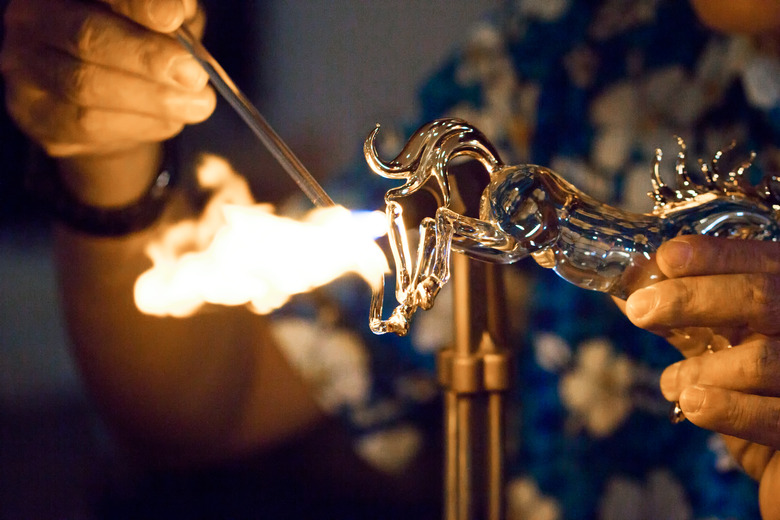How To Make A Black Pipe Burner
Whether you're looking to modify an old charcoal grill to use gas flames, building a homemade gas fire pit or establishing a backyard forge for your metalworking or glass-blowing hobby, a black pipe burner will be a crucial component of your DIY project. Easily built at home with some off-the-shelf pipe and a handful of tools, these simple gas-fed burners will provide you with as much heat as you need and can easily be adjusted or customized to suit specialized conditions.
Black Pipe Propane Burner Basics
Black Pipe Propane
Burner Basics
At its core, a black pipe burner – often called a black pipe propane burner, as the systems are commonly fueled by a propane tank – is a simple thing. The burner is just a measured length of black iron piping with some small holes or cuts along it. Capped at one end and plugged into a gas source at the other, these homemade burners can be lit with a barbecue lighter when the gas line is opened to produce a natural gas flame. While steel or normal iron pipe could theoretically be used for a burner of this design, black iron is the standard for a reason: In addition to being resistant to corrosion, black iron piping is designed with airtight seals in mind and can withstand temperatures up to roughly 1,000 degrees Fahrenheit, making it perfect for projects where heat and gas control are key. Because threaded black iron pipe can easily be purchased at any hardware store, a black pipe burner can take nearly any shape.
Preparing Your Pipe
Preparing Your Pipe
Before you assemble your black pipe burner, you will need to prepare your piping for your project. While not every project involving a black pipe burner will require it, it is considered a good practice to first clean out the interior of your pipes with a wire brush and rag to remove any oils or similar substances that may interfere with your burner's ability to produce an appropriately hot, clean flame.
You will then want to assemble your pipes into your desired final configuration – not permanently but to see how all the piping fits together. Taking note of each pipe's position and how the pipes are connected, use electrical tape and a marker to note where each of your cuts or drilled holes will go. Depending on your project, the size and spacing of your cuts or holes will differ. For example, a DIY gas fire pit should use drilled holes an eighth of an inch wide, spaced throughout the pipe at various distances, whereas a barbecue burner can be cut with a band saw, with cuts spaced a centimeter away from one another. Once your points have been marked, you can use a drill or saw to pierce your piping, cleaning out the interior with a wire brush afterward to remove any detritus. Be careful when using power tools.
Final Burner Assembly
Final Burner
Assembly
With your cuts made, you're ready to assemble your burner. Using your earlier notes as a reference, reassemble your black iron piping. Use threading or Teflon tape and a wrench to help secure your burner's joints, especially if your project requires temperatures over 500 degrees Fahrenheit. Ensure that the cap or caps at the closed end of the piping are secured tightly, and then at the open end you can plug in your gas source. Depending on your project, you may wish to add an air mixer and/or valve control between the gas source and the pipes themselves.
Once everything is together, you need only turn on the gas and carefully use a barbecue lighter to get your burner going. If it isn't working quite as desired, turn it off, disconnect it from the gas source and adjust it by adding more holes for gas to exit or finding ways to adjust the amount of oxygen entering the system.
References
- Ray Rogers Handcrafted Knives: A Dirt Simple Venturi Burner
- YouTube: How to Make a BBQ Burner – Propane
- YouTube: Super Simple DIY Propane Ribbon Burner For Boilers and Forges
- YouTube: Cheap DIY Propane Fire Pit – Step By Step Instructions
- Allied Kenco Sales: Guidelines for Building a Pipe Burner Using the HPGX-1 Venturi
- PVC Fittings Online: What is Black Iron Piping?
